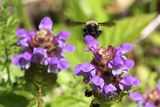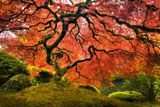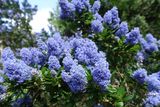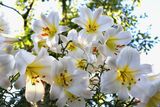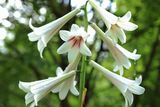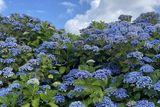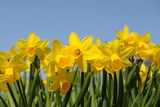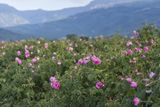Gardening with Diarmuid Gavin: the best evergreens
When winter weather strips flowering plants bare, these garden heroes will give you year-round colour
I'm sitting at a silver desk in the penthouse suite of a glass-encased, futuristic house worthy of a James Bond baddie. Below, the hillside tumbles away until it reaches the banks of a meandering river. Across the water, the city of Prague spreads out, puncturing the sky with fairytale turrets, towers and cathedral spires.
My temporary home is set at the edge of the city's fruit forest, where for decades Czech families have picnicked from spring until autumn. It's too cold for outdoor dining today, but as I write our crew of gardeners are outside planting a new garden around the house. Through much of Northern Europe, evergreen plants predominate and my planting plans for this project echo that.
I'm hearing reports from back home in Wicklow of winds and rain that are stripping deciduous trees and shrubs of their leafy clothing, so the evergreens that retain their foliage but sometimes feel lost among the flowering plants will really begin to shine. That makes it a good time to take a look at which types of evergreens add the most to our plots.
In Prague, I'm making use of old favourites - shaped yew, box balls, mountain pine (pinus mugo) with carpets of pachysandra and leafy ferns to bed them in.
Some gardeners are getting nervous about using box because of box blight - a fungal disease which can destroy the plant. However, if you like that neat topiary look, there are alternatives. You can clip plain old privet into beautiful shapes or try Ilex crenata Dark Green, a holly with small dark glossy leaves which will grow in sun or shade. Unlike box, you can prune it hard if necessary into old wood and it will spring back. There's also a lovely compact variety of holly called Golden Gem which has small golden leaves.
Evergreens can seem too dense in smaller gardens, as though they are gobbling up all the light. A great solution to this is to grow upwards by stripping stems of their leaves, just leaving the upper growth. If you do this with photinia, for example, you start forming a small tree. As well as letting the light in, this allows you to plant underneath the shrub.
Fatsia japonica would also work well in this way, and there are some beautiful varieties of Fatsia polycarpa available with deeply lobed foliage. These look very exotic but are in fact quite hardy. For excellent leaf shape, I'd also use Mahonia which is a common enough shrub but it can look really great and it has delicious yellow scented flowers in winter.
Variegations are great in winter for brightening up dark corners - I'm thinking particularly of Euonymus Silver Queen, with its creamy margins that are sometimes tinged with pink.
North-facing walls can be transformed by variegated ivy, such as the large-leaved Sulphur Heart which has yellow splashes and Buttercup which is completely yellow if grown in the sun. Variegated plants will sometimes try to revert to their original plain green colour and send up these rogue shoots - keep an eye out for these and prune them right back to ground level.
For year-round colour in the garden, create a strong structure of evergreens. By using different leaf shapes and textures and variegations you will not only have an interesting backdrop throughout the flowering season, but will also extend the beauty of your garden well into the winter months.
This week in the garden:
It’s the rainy season, so make sure your drains are clear of twigs and leaves. If you’re attempting it yourself, be careful. It’s really a two-person job — one up the ladder and one holding it.
Stand pots on bricks to help drain them more quickly. Try not to walk on lawns that are sodden as it leads to compaction of the soil structure.
Lag outdoor taps and drainpipes before the icy weather sets in to prevent damage through freezing. This is especially important in the midlands, where temperatures can drop dramatically.
Decking and paths can be hazardous in wet weather. Remove algae with a dilute bleach solution, or a store-bought alternative, and a yard brush with hard bristles. It can take a fair bit of elbow grease but should help ensure a long-lasting deck.
Stop feeding goldfish in garden ponds as they won’t take the food during the colder winter months and it just sinks to the bottom and turns to organic waste. If your pond ices over, make sure to keep a small area open to let oxygen in.
Now is your last chance to get those bulbs which have been hanging around on the potting shed shelf in the ground for spring flowers such as crocuses (pictured).
Join the Irish Independent WhatsApp channel
Stay up to date with all the latest news
